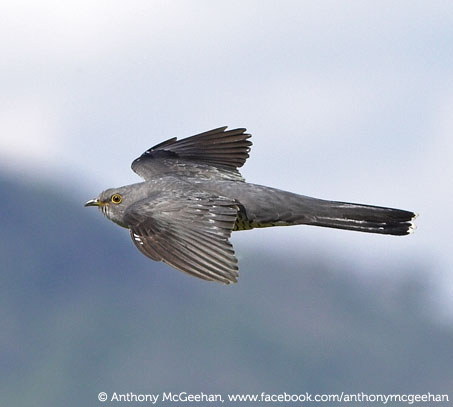Mark the return of Spring by listening out for the cuckoo!
Help record what is for many the distinctive sound of Spring – the call of the cuckoo.
If you see or hear a cuckoo please submit your record below.

Colouring: Upper parts: blue-grey; breast: dark-barred white; males and females similar; juvenilles grey-brown and heavily streaked.
Size/shape: Dove size. Slim body, pointed wings - like small bird of prey e.g. kestrel or sparrowhawk.
Call: Cuc-oo (males). Bubbling call (females). Call throughout spring. To hear it, visit the RSPB website. This bird is much more likely to be heard than seen.
Timing: Arrive from Africa in April and May.
Strategy: Don't build nests, but use those of other birds e.g. dunnocks, meadow pipits etc. In host bird's nest, female cuckoo removes one egg and lays one of her own. Host bird brings up large cuckoo chick which pushes the remaining eggs or chicks out of the nest.
Occurrence: Found across Northern Ireland. More common in western parts but occurs in east also e.g. Murlough National Nature Reserve in Co. Down.
Habitat: Wide variety but prefers rough marginal land such as hillsides, heathland, scrub and marshes.
Status: Rapidly declining species. Red listed as a bird of conservation concern in UK. Northern Ireland Priority Species. Protected under Schedule 1 of the Wildlife (NI)Order 1985 (as amended).
Threats: Land use changes leading to loss of preferred habitats such as wetlands and marginal land.
Call often mistaken for: Collared Dove or Wood Pigeon
Important: if you use this site regularly, please remember to login.
This will give you access to the My Records report which allows you to manage your data.